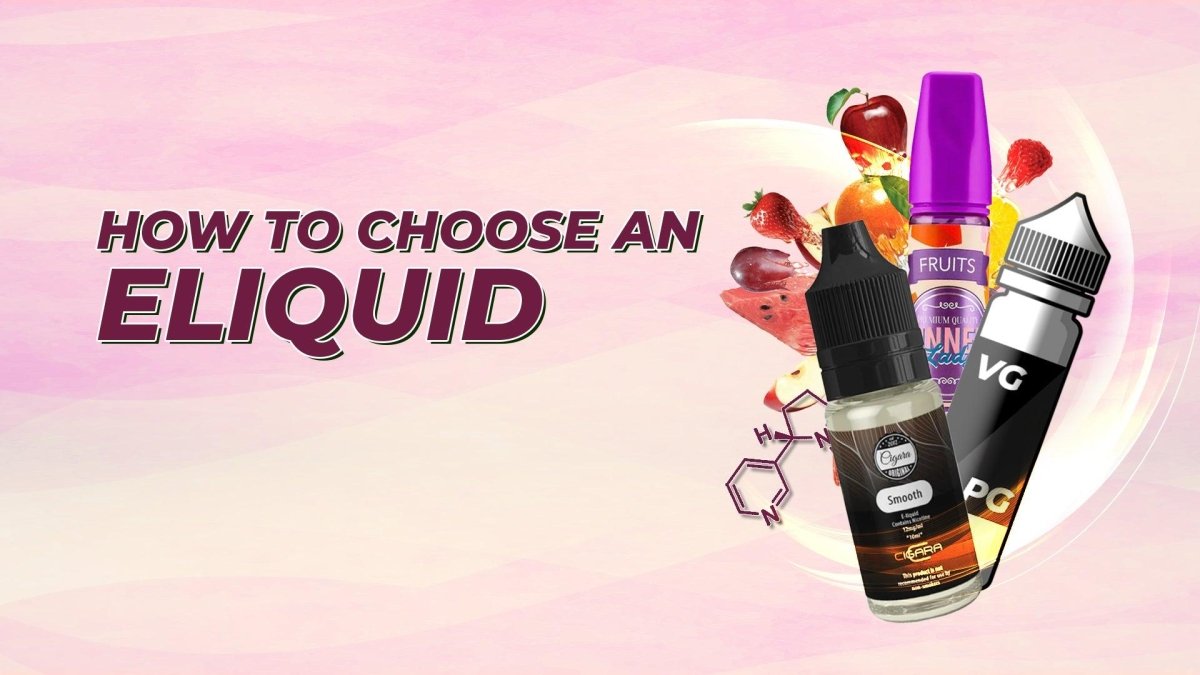


Vaping and Allergic Reactions: What You Need to Know!
As vaping continues to grow in popularity, some users are curious—or concerned—about potential allergic reactions. From nicotine to flavouring ingredients, several elements in e-liquids can trigger sensitivities. If you’ve experienced unusual symptoms after vaping, this guide will help you understand common allergens in e-liquids, how to identify signs of an allergic reaction, and provide tips for safe vaping if you have sensitivities.

1. Propylene Glycol (PG)
PG is commonly found in e-liquids, providing the “throat hit” that mimics traditional smoking. However, some people are sensitive to PG and may experience mild skin reactions, throat irritation, or, in rare cases, respiratory symptoms.

2. Vegetable Glycerin (VG
VG is derived from plant oils, often from soy or palm, and is used to create thicker vapour clouds. Although VG is generally hypoallergenic, people with specific plant allergies, such as soy, might experience mild reactions.

3. Nicotine
Nicotine sensitivity is rare but possible. Users who experience heart palpitations, dizziness, or nausea after vaping may be sensitive to nicotine, especially at higher strengths.

4. Flavourings
Flavourings can be complex and are often derived from natural sources, which may include nuts, fruits, or other allergens. Some brands offer “natural” flavours, which may not be ideal for those with food allergies. If you’re sensitive to certain foods, always check flavour ingredients carefully.

Understanding the symptoms of a reaction can help you quickly identify and address any issues with your e-liquids. Here are common symptoms:
- Respiratory Symptoms: Coughing, wheezing, and shortness of breath may indicate a sensitivity to PG or other ingredients. People with asthma may notice worsened symptoms.
- Skin Reactions: Hives, rashes, or itchiness around the mouth or on the hands after vaping can indicate an allergy to PG, VG, or flavouring agents.
- Digestive Issues: Nausea or an upset stomach after vaping may signal a sensitivity to nicotine or specific flavour ingredients.
- Mouth or Throat Irritation: Burning sensations or soreness in the mouth or throat could indicate a sensitivity to PG.

If you suspect an allergy, taking the following steps can help:
1. Switch to High-VG E-liquids:
Those with PG sensitivities may find relief by choosing high-VG e-liquids. These have less PG, which can reduce symptoms like throat irritation.
2. Opt for Nicotine-Free Options:
If nicotine causes sensitivity, try a nicotine-free e-liquid or slowly reduce your nicotine strength.
3. Choose Hypoallergenic Flavourings:
Some e-liquids come with hypoallergenic or “allergy-friendly” flavours. Avoid complex or “natural” flavours if you’re unsure of the ingredients.
4. Patch Test New E-liquids:
Before using a new e-liquid, dab a small amount on the inside of your wrist to check for skin reactions.
If you experience mild symptoms, stop vaping immediately and drink water to soothe your throat. For more severe reactions, such as difficulty breathing, seek medical help immediately. Consult an allergist if you notice recurring symptoms, as they can help identify specific ingredients causing the reactions.
For those who have had reactions or wish to avoid potential allergens, here are some tips to enjoy vaping safely:

• Select Simple Flavours:
Avoid complex blends, such as dessert or mixed fruit flavours, as these contain more ingredients.

• Look for Clear Labels
Choose brands like Dinner Lady or Cigara Salts, which provide clear ingredient listings.

• Consider Pod Vapes:
Pre-filled pods or disposables, such as Elf Bar or SKE Crystal, often have more straightforward ingredients lists, making it easier to identify potential allergens.

• Experiment with Low-Wattage Devices:
Devices with lower wattage produce gentler vapour, which may reduce irritation for some users.
Frequently Asked Questions (FAQs)
1. Can you be allergic to vaping?
Yes, it’s possible to be sensitive or allergic to specific e-liquid ingredients like PG, VG, nicotine, or flavourings. Reactions vary from mild irritation to more severe respiratory symptoms.
2. Is vegetable glycerin (VG) allergy-friendly?
VG is generally hypoallergenic, but it can trigger reactions in individuals with certain plant allergies. Those with sensitivities to palm or soy should consult their doctor if reactions occur.
3. How can I tell if I’m sensitive to propylene glycol (PG)?
If you experience a scratchy throat, dry mouth, or mild skin reactions after vaping, you may be sensitive to PG. Opting for a higher VG e-liquid may reduce symptoms.
4. Are there hypoallergenic e-liquids available?
Yes, some brands offer hypoallergenic or low-allergen e-liquids. Look for clear ingredient listings and avoid “natural” flavours if you have known food allergies.
5. Can vaping cause skin reactions?
Skin reactions such as hives or itchiness are possible if you’re allergic to certain ingredients, especially PG. Switching to VG-based e-liquids may help, but consult a healthcare provider if symptoms persist.
Conclusion: Is Vaping Safe for Allergy-Prone Users?
In Short yes! Vaping can be enjoyable for most users, but those with allergies should choose their e-liquids carefully to avoid potential triggers. By understanding ingredient sensitivities and making thoughtful choices, even allergy-prone users can find a safe way to vape. For any ongoing or severe symptoms, consult a healthcare provider to ensure your vaping experience aligns with your health needs.

Jemma Wolfe
Lead Content Writer @myCigara
I'm Jemma, a writer and ex-smoker with a passion for vaping. Since ditching the cigs over a year ago, I've used a whole host of vaping products to help me stay smoke-free and live a healthier lifestyle.
Now, my goal is to help others along their quit smoking journey by writing expert reviews and providing vaping guidance. When I’m not writing, you can find me curled up with a good book, hanging out with my cats or watching live music.

















